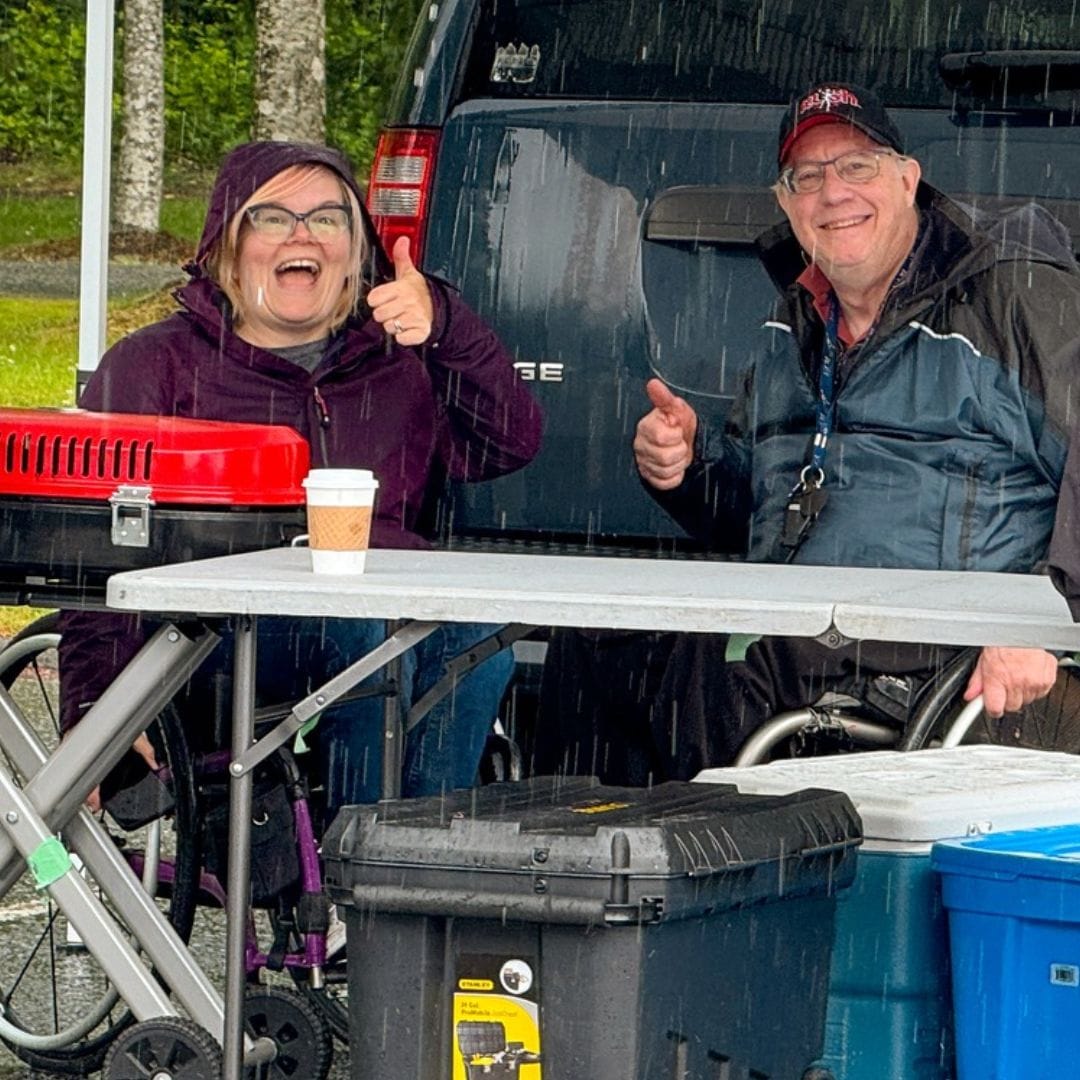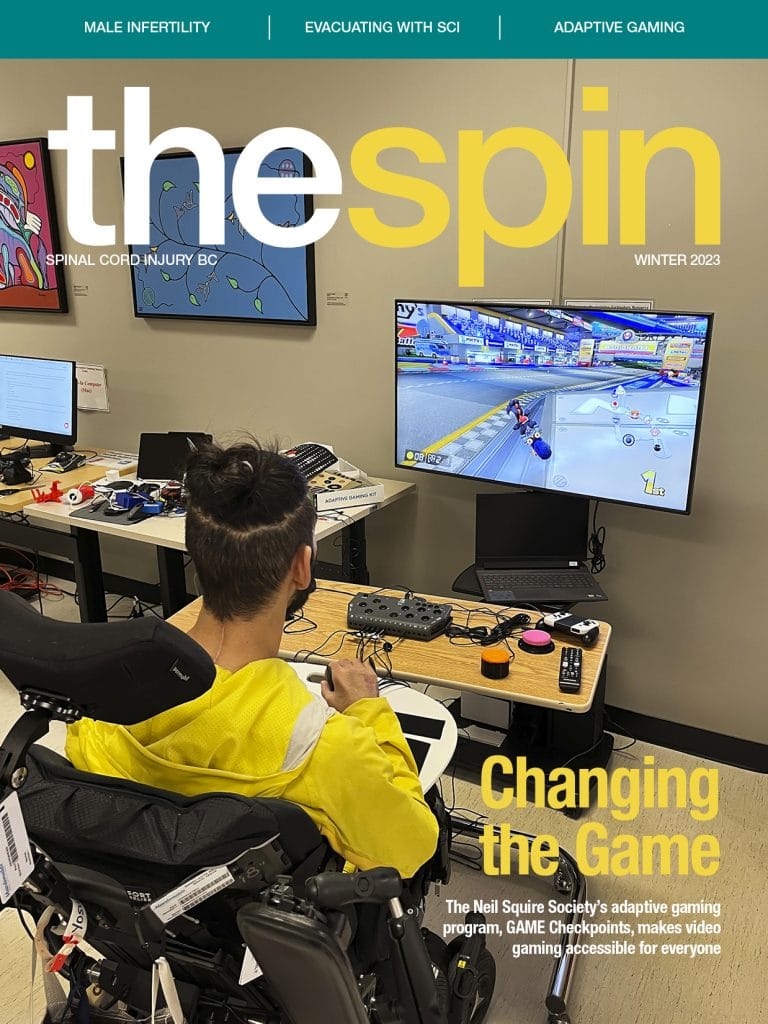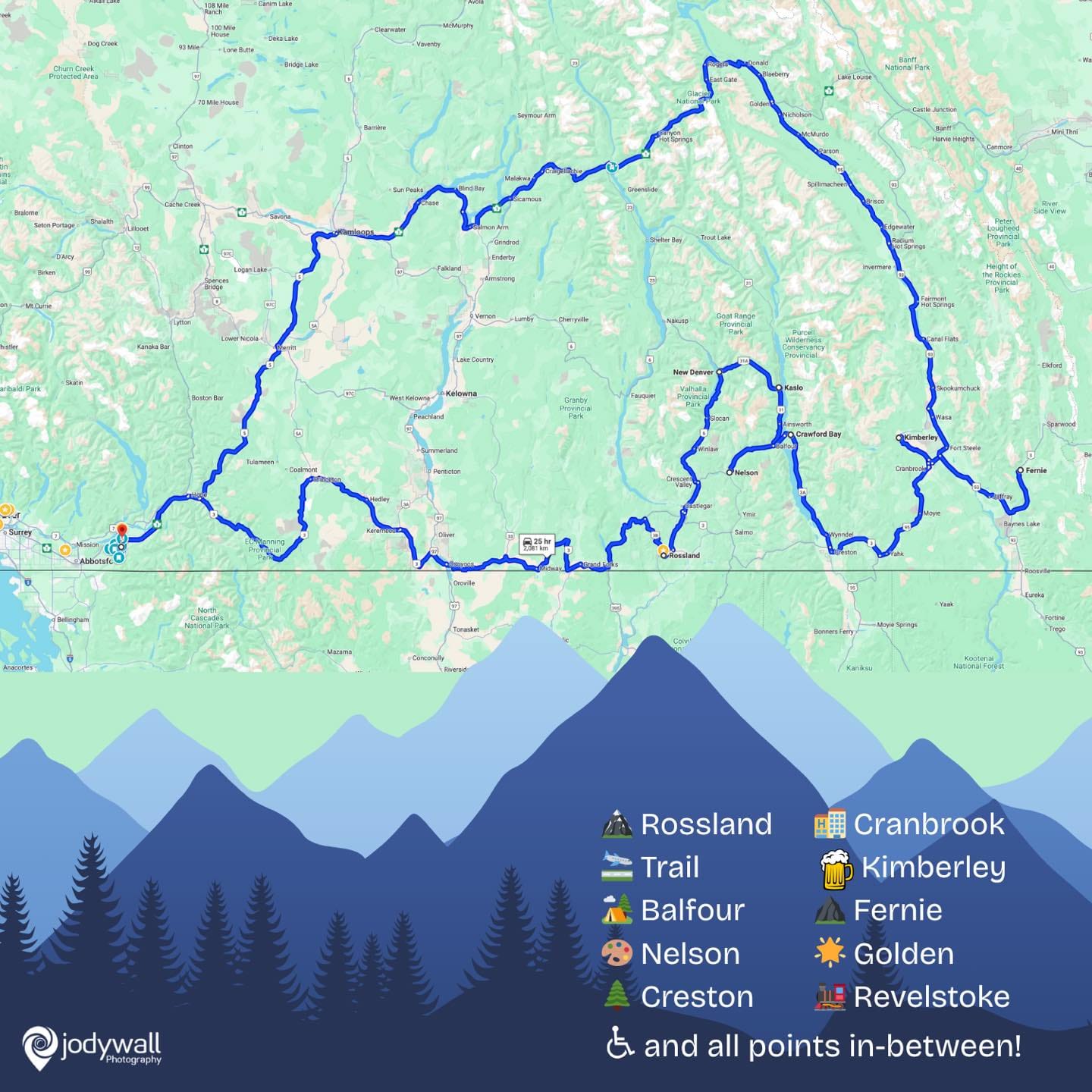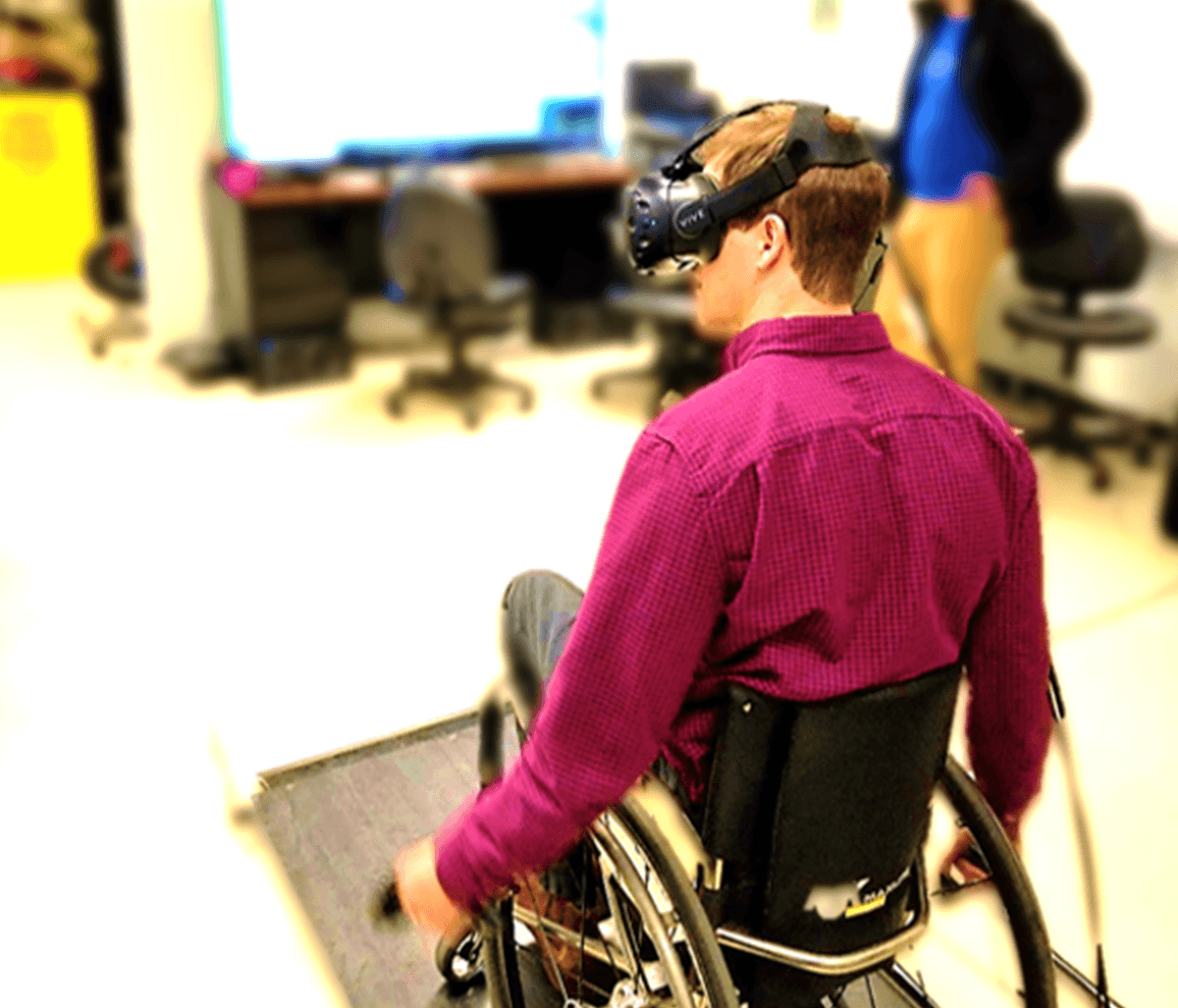
The wind and rain combination leaves me soaking wet for the rest of the day until I can get home. I try to avoid cushions and backrests that are absorbent (made of foam or honeycomb) when it’s wet to reduce my risk of pressure injuries and other skin issues. My wheelchair wheel rims are slippery when wet, so going down hills can be tricky. I slow down as much as I can or try to find a lower incline path. Also, wet wheels squeak loud on certain surfaces, so everyone turns and looks at you. Not a real big deal but I’m still looking for a solution!
Bert
The rain accumulates and I end up with a lap full of water! Water also causes deterioration of castor stem bearings and I usually need to replace them once or twice per wet season. Lap covers and extra-long raincoats are essential. In a pinch, a dollar store poncho or shower curtain works well to cover the lap and legs from heavy rain. But these drag on the wheels when pushing for manual wheelchair users, so it’s only a temporary option.
Peter
My big pet peeve is coming home from the rain and tracking all the dirt, mud, and water all over my floors. Tire marks everywhere! When I come inside, I use an absorbent hand towel to wipe my wheels. I keep the towel by my front door or under my seat if I’m out and about. Tire covers are also handy and reduce that wet tire squelching noise.
Teri
The wet pavement causes more reflection at night, which makes wheelchair users less visible to drivers. I make myself more noticeable by wearing reflective materials or lights on my clothing and chair. And I find that the cold and damp increase my pain and spasticity. I always have extra layers to keep warm, but it is harder to change out of wet clothing, especially in public.
Brandy
This time of year is terrible for wheeling. Leaves and snow piling up on the sidewalk do not help. I find I can deal with most rainy situations if my gloves have grip (like nubuck palms or silicone coating) and cover my fingers to keep them warm. Gorilla Grip gloves are my personal favourite. I order them in bulk on Amazon, so I always have a good pair to use when mine wear out!
Ryan
How can communities help? Jocelyn recommends:
- Look to ensure puddles do not accumulate on ramps or crosswalks, and that nothing obstructs accessible parking spaces.
- Accessible cabs should be available for wheelchair users—don’t call for one if you can take an alternative cab type.
- Keep accessible spaces clear on transit.
- Make room for wheelchair and scooter users in bus shelters, especially if you already have an umbrella covering you. And be careful that your umbrella doesn’t drip on someone’s head!
Read more stories from the Winter 2023 issue of The Spin, including:
- Adaptive gaming
- Aging with SCI
- Emergency preparedness
- Male infertility treatments
And more!




